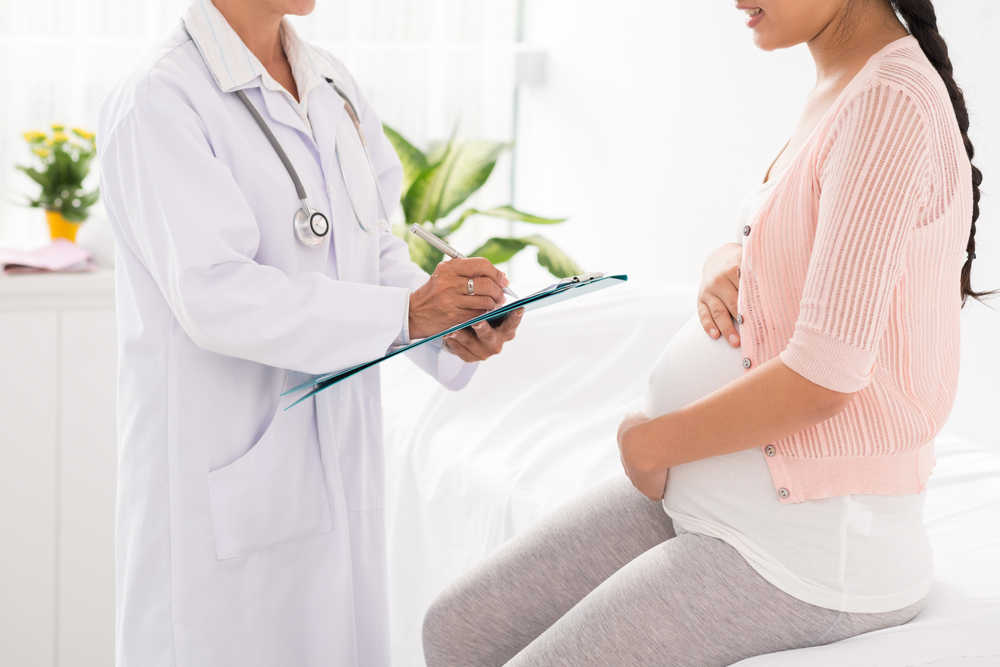_x000D_
Good health is something we tend to take for granted—that is, until something goes wrong. In recognition of Breast Cancer Awareness month, we take a closer look at how to maintain best breast health during pregnancy and as we age. Medical experts share their advice regarding the current thinking behind self breast exams, when to get a mammogram and what steps women can take to ensure their overall breast health.
Mammogram-Ready; Self Exam-Savvy
The subject of when to have a mammogram has been fraught with controversy over the last several years, with some groups advocating for holding off on an annual exam unless there is a family history of breast cancer. Still others feel this test should be part of their annual medical exams. “According to the American Cancer Society, women between the ages of 40-45, who are of average risk, can choose to have a baseline screening mammogram,” advises Dr. Monica Foreman, an OB/GYN with the Department of Obstetrics & Women’s Health at Montefiore Medical Center, Bronx, N.Y. “Starting at age 45, women should have annual mammograms until 55 years of age, and after then, they have the choice to switch to every 2 years or to continue with annual screening.”
Women who are considered high-risk—those with a strong family history, dense breasts or that have a genetic mutation—may be strong candidates for early, regular screenings. The best way to determine the right course of action is by talking to your doctor. “It’s important for women to know their family history and to share…any personal medical history with their healthcare provider,” notes Foreman.
Your doctor is also the best person to demonstrate how to perform a self-exam properly. Yet another hot topic when it comes to breast health, checking your own breasts for lumps and changes isn’t something that the medical community is actively promoting. “Rather than advise patients to do these checks regularly, we are more focused on telling women to be more ‘breast-aware,'” explains Dr. Lauren Streicher, associate clinical professor of obstetrics and gynecology at Northwestern University’s Feinberg School of Medicine.
Streicher also suggests checking one’s breasts following a completed menstrual cycle and alerting your physician to any unusual changes, such as nipple discharge, puckering or nipple change in direction. “Also pay attention to lymph nodes in the arm pit,” she adds, an area that women commonly overlook. And if you experience any breast pain, don’t become alarmed as cancers are typically not painful.
Pregnancy and Beyond
One notable period in a woman’s life when breast change becomes more apparent is during pregnancy. Due to an increase in hormones, breasts will typically increase in size, become more tender and the nipples and areola may become larger and darker. “At around 4-5 months, some women may notice leakage of straw-colored discharge,” says Foreman, who notes that this change is completely normal.
In addition, breast lumps or cysts may develop during pregnancy—something that should be brought to the attention of your doctor. “With more women getting pregnant, older, the numbers for cancer go up as we age,” says Streicher. “It’s important to remember that women can develop breast cancer during pregnancy, so don’t ignore any lumps.”
In fact, she believes that having a baby is an opportunity to learn more about your own family’s medical background. “Pregnancy is an ideal time not just to focus on the health of the baby, but of the mother,” says Streicher. “People often have a vague idea of what relative had a certain illness. It’s a good time to hone in on your family’s medical history.”
After pregnancy, those mothers who choose to breastfeed may be concerned that their breasts may flatten once they finish nursing. Foreman assures that once a woman has returned to her pre-pregnancy weight, her breasts, in turn, should return to their pre-pregnancy size. “As a woman ages, the decline in estrogen levels can cause changes in the tissue and structure of her breasts…[which] causes the skin overlying the breasts to become less elastic,” she adds.
While there is no surefire way to prevent breast cancer, women can certainly take the proper steps to ensure a healthier lifestyle. Foreman urges women to limit their alcohol intake to less than drinks per day; maintain a healthy body weight, as obesity can increase the risk for breast cancer; stop smoking; exercise 4 hours or more each week and eat a low-fat diet that is rich in fruits and vegetables.
_x000D_
_x000D_




